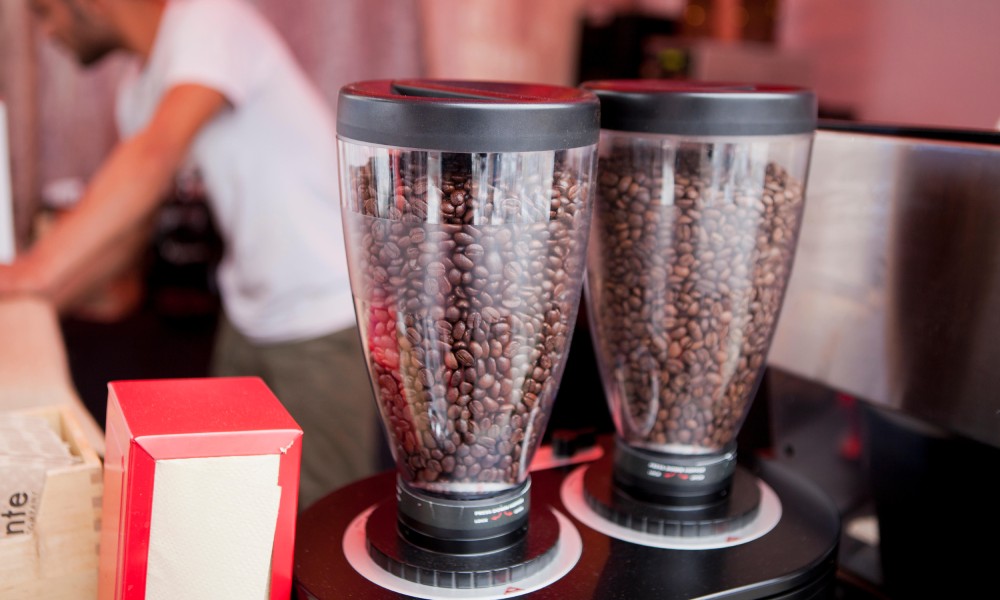Light roasted coffee is out, medium roasts are in
As specialty coffee shifts towards medium roasts, Jordan Montgomery speaks to Josh Tarlo about what this means for the sector
In the early days, specialty coffee was closely associated with light roasted coffee; so much so that it became deeply ingrained in its ethos. Today, many in the industry are turning away from light roasts. Does this say something about the direction specialty coffee is headed?
In some ways, specialty coffee favoured light roasted coffee as a response to the dominant presence of dark roasts across the industry. It offered a way for brands to differentiate themselves from large, commercial coffee companies that adopted traditional roasting styles.
Leading the charge, roasters from Norway and Scandinavian countries drove the popularity of light roasted coffee. “Nordic-style” roasting started to gather momentum in the early 2000s, with Scandinavian baristas winning six of the first seven World Barista Championships.
Beyond the competition stage, influential Nordic roasters like Tim Wendelboe and Solberg & Hansen inspired the broader sector to roast lighter and celebrate the natural attributes of single origin coffees.
Indeed, this was the primary selling point of light roasted coffee. With less development time in the roasting process, the “varietal character” of the coffee is left intact. Unaffected by “roasty” flavours, specialty coffee’s light roasts tell the customer as much about the journey from farm to cup as possible.
Today, however, specialty coffee has grown in popularity to the point where it must appeal to a larger, wider audience. In this effort, brands are taking a broader approach to roasting.

Medium roasts for a broader audience
While light roasts have been celebrated within specialty coffee circles, they aren’t without criticism – often perceived as “sour” or “hay-like”.
In some ways, the rising popularity of medium roasts is a response to this. They act as a point of access for newcomers to specialty coffee – helping to bridge the gap between light roasts and what the sector’s growing audience has been previously familiar with.
At the same time, brands have started to shift away from designating their coffees to a particular roast level. Historically, light roasts have been associated with brewing filter coffee, while more developed roasts have been used for espresso.
And although coffee shops and consumers have embraced this characterisation, the increasing popularity of medium roasts and “omni roasts” – which are developed for all brewing styles – is seeing a diminishing focus on roast level to define coffee, and more emphasis on other features, such as flavour notes and processing.
“There is definitely a lot of medium coffee out there, but I think more what has happened is the centre of what specialty coffee is has moved away from talking about things like roast levels,” says Josh Tarlo, founder of Headstand and former UK Barista Champion.
“I don’t think that light roasts have become less of a part of specialty – it’s more that the advertising around it is diminishing,” Josh says.
While this may be the case, a broader push towards medium roasts has widened the scope of specialty coffee. Now, more balanced and traditionally “coffee-like” flavours exist to draw in new customers – customers that, before, may have been alienated by light roasts.
Is light roasted coffee old news?
In general, medium roasts cater more to what customers new to specialty coffee expect, or are familiar with. This also extends to the way in which consumers drink their coffee.
Historically, light roasted coffee was closely associated with pour overs, and a “no milk, no sugar” approach. However, a 2021 survey found over 70% of UK coffee consumers regularly drank their coffee with milk. As an increasing number of “regular” coffee consumers make the switch to specialty coffee, this is a figure the sector will have to take more seriously.
And as specialty coffee strives to capture a larger audience, milk-based drinks play a central role in that effort. For these drinks, medium roasts are often preferable because the flavours better complement milk; whereas the delicate flavours of light roasted coffee can be lost.
On top of this, light roasted coffee is often viewed as harder to work with. Given their higher bean density, brewing light roasts often requires a finer grind size. In some cases, this can cause extraction issues, such as channelling when brewing for espresso, which can lead to sour cup profiles.
In contrast, medium roasts are considered easier to work with and extract a balanced flavour profile from. In this sense, if coffee shops choose to turn away from using light roasts, this may be driven by pragmatism.
However, some believe light roasted coffee shouldn’t be painted with such broad brushstrokes. Furthermore, the familiarity that many consumers have with bitter flavours may make them more accepting and receptive to a poorly executed dark roast, but light roasts don’t benefit from the same level of lenience.
“I don’t think light roasts are harder to work with, I just think that badly made light roasts do not complement milk that well and we are less used to those flavours,” says Josh. “Poorly brewed dark roast is not particularly nice, but dark sugar and slightly bitter flavours are very familiar to us, so it doesn’t get thought of in the same way.”
Despite having the odds against them, light roasted coffee has played a central role in the growth of specialty coffee. As such, consumers could be more attuned to them than originally thought.
“I think that the massive growth of specialty coffee during a period of using lighter roast shows that their reception has generally been positive,” Josh says.
Ultimately, while medium roasts are becoming more prevalent in the specialty coffee industry, it is a stretch to say they are replacing light roasts. Rather than pitting the two against each other, this shift can be seen as another step towards the growing appeal of specialty coffee – and a broadening of its horizons.
New Ground Coffee
Want to read more articles like this? Sign up for our newsletter!








